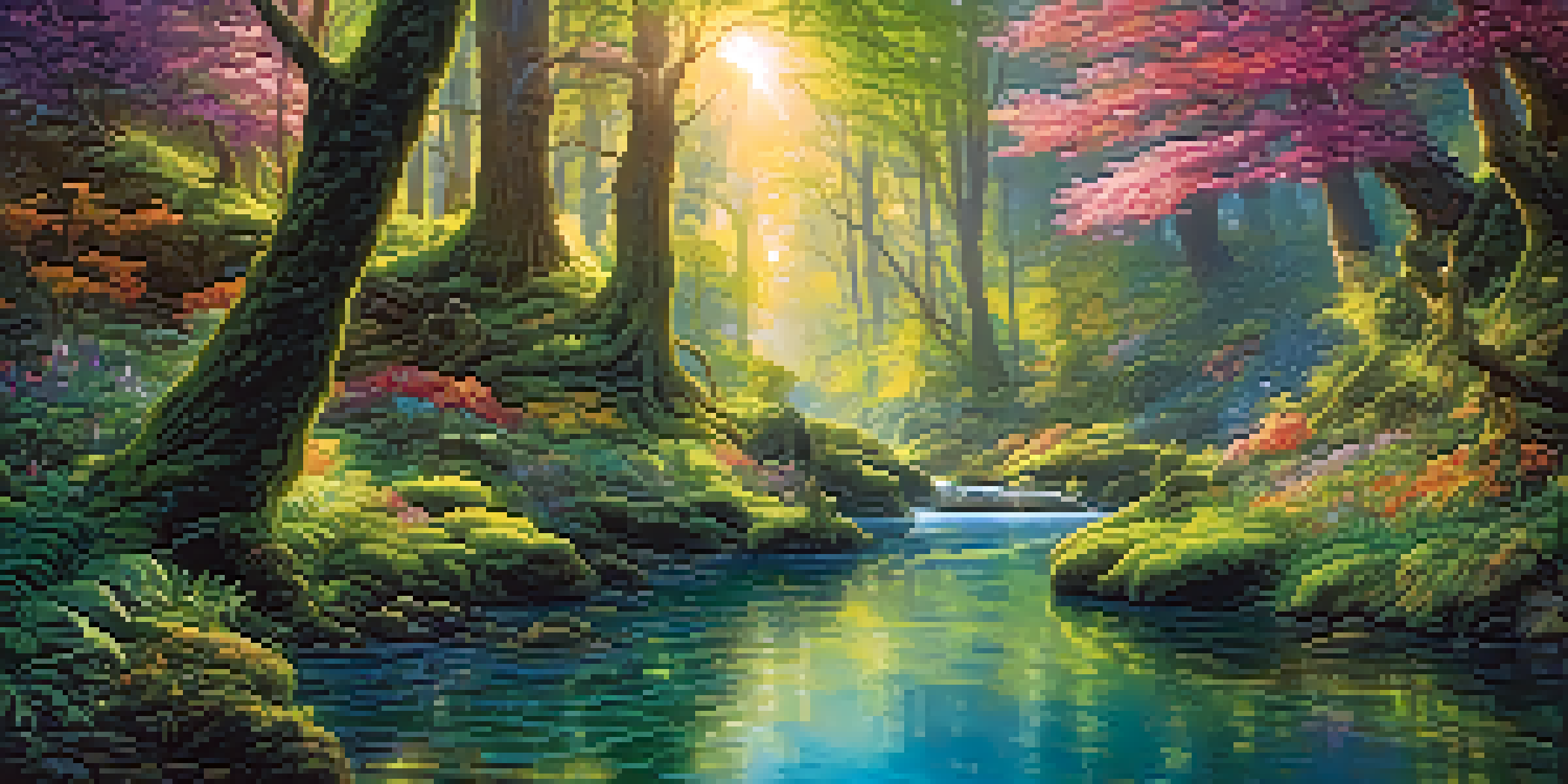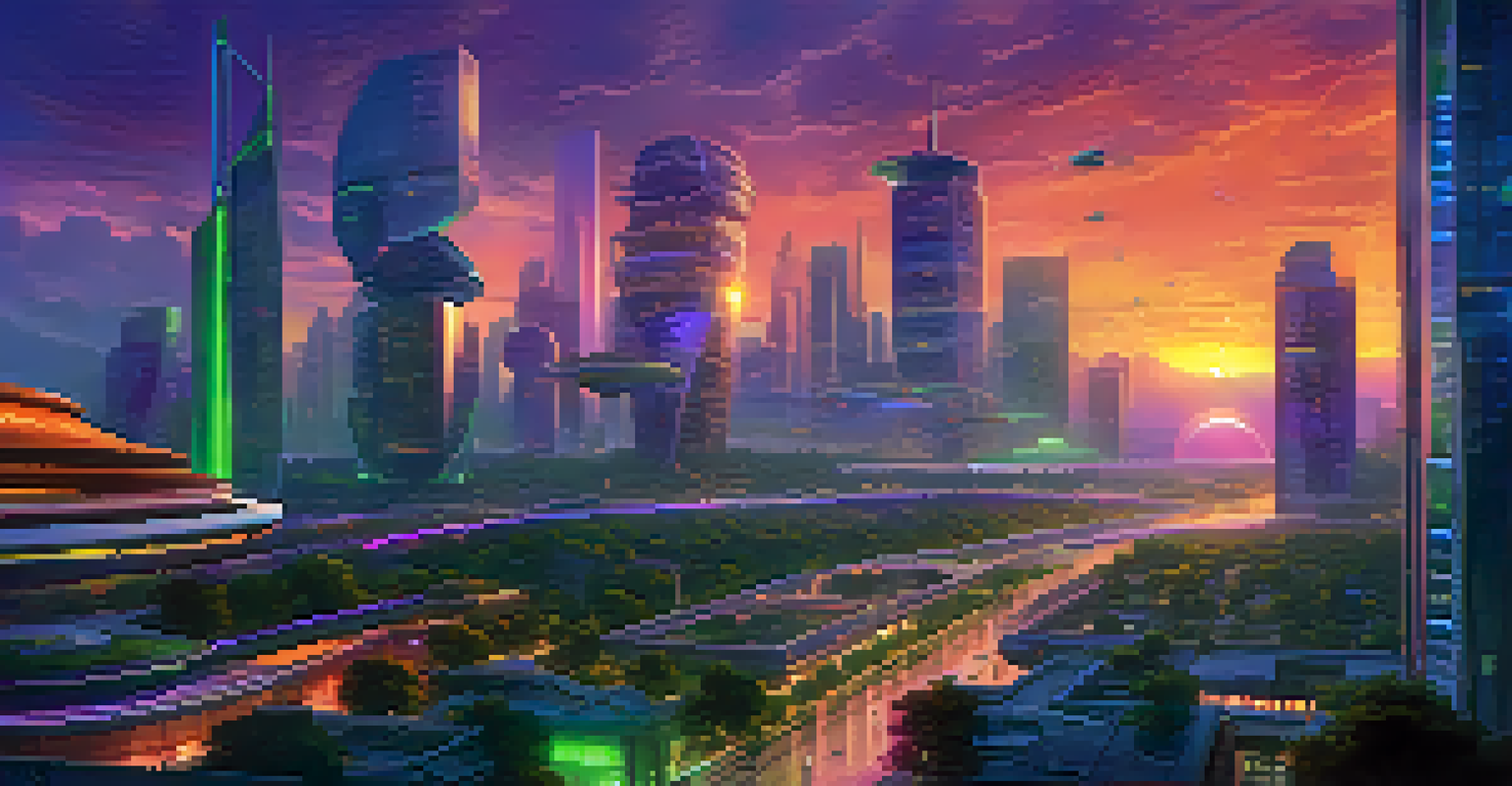The Role of Visual Effects in Enhancing Storytelling

Understanding Visual Effects and Their Importance
Visual effects (VFX) are techniques used to create imagery that cannot be captured during live-action filming. They play a crucial role in modern storytelling, allowing filmmakers to bring their wildest imaginations to life. From fantastical creatures to breathtaking landscapes, VFX can enhance the narrative and transport audiences to different worlds.
Visual effects are a way of telling stories that allow the audience to experience the impossible.
Imagine watching a movie where a character flies through a bustling city or battles a dragon. These scenes rely heavily on VFX to create a believable experience for viewers. Without these effects, many stories would lose their charm, as they would lack the visual excitement that keeps audiences engaged and invested.
In essence, visual effects are not just about spectacle; they serve to deepen the audience's connection to the story. By providing visual context and enhancing emotional moments, VFX elevates storytelling from mere words and images to an immersive experience.
Visual Effects as a Tool for Storytelling
VFX can seamlessly weave elements into a story to support its plot and themes. For instance, in a sci-fi film, visual effects can create futuristic technology that is essential for the storyline, making the setting believable and engaging. This allows the audience to suspend disbelief and fully immerse themselves in the narrative.

Furthermore, visual effects can highlight emotional depth. A subtle use of effects, such as changing the color palette during a poignant scene, can evoke specific feelings in the audience, enhancing their connection to the characters and events. This combination of visual artistry and emotional storytelling is what makes VFX so powerful.
VFX Enhances Storytelling Experience
Visual effects deepen audience engagement by creating immersive worlds and enhancing emotional moments.
In many ways, visual effects act as a bridge between the story and the viewer. They provide a canvas on which storytellers can paint their visions, ensuring that the audience experiences the intended emotions and themes on a deeper level.
Enhancing Realism Through Visual Effects
One of the primary roles of VFX is to enhance realism in storytelling. This is especially important in genres like fantasy or science fiction, where the extraordinary needs to feel credible. By carefully crafting realistic environments, filmmakers can create a sense of authenticity that draws viewers into the narrative.
The magic of cinema is that you can create any world you want; it’s the visual effects that make that world believable.
For example, in films like 'Avatar,' visual effects were used to create the lush, vibrant world of Pandora, making it feel alive and real. The attention to detail in the flora and fauna not only captivated audiences but also reinforced the film's environmental themes. This level of realism can make a story resonate more profoundly with viewers.
Moreover, blending practical effects with digital enhancements can create an even more convincing experience. When audiences perceive that what they see could plausibly exist, they are more likely to engage with the story on an emotional level.
Creating Fantastical Worlds with Visual Effects
Visual effects allow filmmakers to build entire worlds that exist only in the imagination. From intricate landscapes to alien civilizations, VFX can transport viewers to places they never thought possible. This ability to create the fantastical opens up a realm of storytelling opportunities that can captivate audiences of all ages.
Consider the magical world of 'Harry Potter,' where VFX brought to life spells, mythical creatures, and enchanted settings. These elements not only enriched the storyline but also created a sense of wonder that resonates with audiences. The visual spectacle encourages viewers to suspend disbelief and invest in the story's magic.
Balancing VFX and Narrative Depth
A successful film strikes a balance between visual effects and traditional storytelling to create an impactful experience.
Ultimately, the creation of these fantastical worlds enhances the storytelling experience by allowing audiences to explore the limits of their imagination. The combination of narrative and visual effects creates an unforgettable journey that lingers in the minds of viewers long after the credits roll.
Visual Effects in Character Development
Visual effects also play a significant role in shaping characters and their journeys. By using VFX, filmmakers can depict character transformations, such as aging, supernatural powers, or even metamorphoses, in visually striking ways. This not only adds depth to the characters but also enhances the overall narrative.
For instance, in superhero films, the use of VFX to showcase a character's powers can be pivotal in establishing their identity. The electrifying visual representation of a hero's abilities helps the audience understand their role within the story, making their journey more relatable and compelling.
Moreover, visual effects can be used to highlight a character's emotions, further drawing the audience into their experience. Whether it's a subtle change in a character's appearance or a dramatic transformation, VFX can deepen the connection between the audience and the characters they care about.
The Future of Visual Effects in Storytelling
As technology evolves, so too does the potential for visual effects in storytelling. Advancements in artificial intelligence, virtual reality, and real-time rendering are set to revolutionize how filmmakers approach VFX. This not only promises to enhance the quality of visual effects but also opens up new avenues for storytelling.
For example, virtual reality is already allowing audiences to experience stories in immersive ways, where they can interact with the environment. This level of engagement could redefine narrative structure, making the audience an active participant in the story. Imagine being able to influence a character's decisions through your choices in a virtual world.
Future Innovations in VFX
Advancements in technology promise to revolutionize visual effects, offering new storytelling avenues and immersive experiences.
Ultimately, the future of visual effects in storytelling holds immense potential. As filmmakers continue to push the boundaries of creativity and technology, we can expect even more innovative ways to enhance narratives and captivate audiences.
Balancing Visual Effects and Traditional Storytelling
While visual effects are an incredible tool for storytelling, it's essential to strike a balance between VFX and traditional storytelling methods. Over-reliance on visual effects can detract from character development and plot depth, leading to a spectacle that feels hollow. A well-crafted story should prioritize narrative and character, with VFX serving as a complement rather than a crutch.
Films like 'The Shape of Water' exemplify this balance, where visual effects enhance the emotional depth of the story without overshadowing it. Here, VFX are used sparingly and thoughtfully, allowing the narrative and characters to shine through, ultimately creating a more impactful experience.

As audiences become increasingly discerning, filmmakers must remember that visual effects should enhance, not replace, the core elements of storytelling. A successful film will balance the two, ensuring a captivating experience that resonates with viewers.